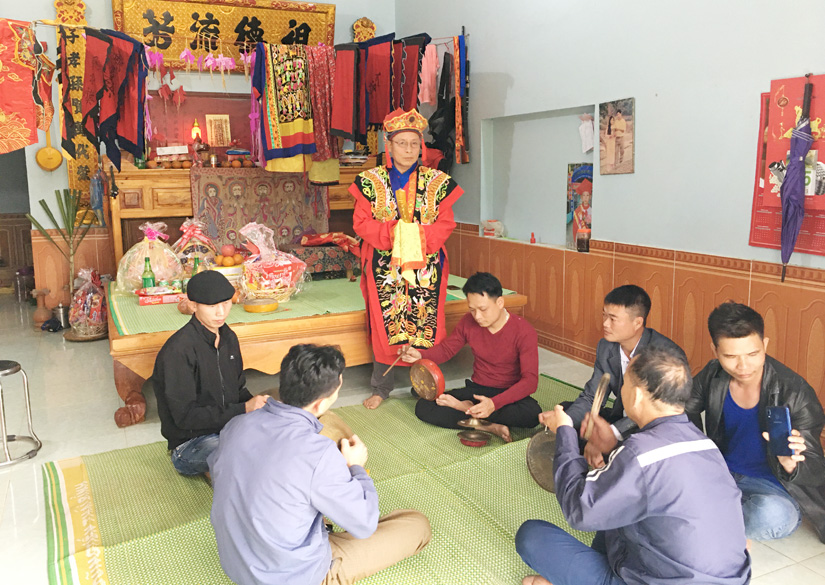
The shaman To Quang Chung in Hamlet 1, Hoa An Commune, Chiem Hoa District transmitting his profession to students.
Today, shamans appear in most of the important rituals of ethnic minorities such as funerals, weddings, new house worship, etc.
A person to can do as a shaman must have high merit or live in a traditional family. A shaman must have hand-written ancient books. In these books, there are many parts about worship ritual in funerals, weddings, house building, childbirth, healing, astrology, etc.
Normally, when a family holds an important ceremony, two peole in the house have the duty to go to the shaman's home. One of them will picks up the shaman and the other carries two boxes of books and tools for the worshiping ceremony to their house.
Therefore, shamans can also be called folk artists, because of their knowledge and skills of performing rituals. They not only memories hundreds of worship songs, but they also know how to dance and and perform their rituals. For example, the Khen (panpipe) is a cultural identity of the Mong, so Khen is an indispensable item in the worshiping rituals of the Mong people. For the Tay people, the Then performers are also called shamans. They perform the worship songs by the Then songs. Meanwhile, Dao shamans perform Tet dances and Senh Tien dances. In short, each folk dance, which is performed in worshiping rituals by shamans, expresses local people's desire of a happiness and prosperous life.
Currently, the profession of shaman has been handed down in ethnic minority villages, contributing to preserving their culture identities and enriching the spiritual life of ethnic minority groups.

Comment
Print